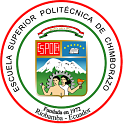Formal Analysis of the Cawiña of the Cacha Community, Birth of the Puruhá Nationality - Ecuador
DOI:
https://doi.org/10.47187/perspectivas.5.1.131Keywords:
cawiña, belt, sash, andean proportion, Andean, iconography.Abstract
The object of study of this research a sash called cawiña, used by the indigenous inhabitants of the Cacha community located in the city of Riobamba, Chimborazo. This is done through the prior analysis of the emergence of fabrics in the national territory through the historical study of the traces left in ceramic objects by different cultures. Simultaneously, the Andean worldview is determined, specifically the thought of the Cacha nationality. Then, there is a formal analysis based on the compositive categories of the sash, with a case study sample C5 collected approximately thirty two years ago in said community. The result is a graphic narrative characterized by the systematization and order under the principles of symmetry, rhythm, and in a relevant way the Andean proportion.
Métricas
References
Cereceda, V. (2010). Semiología de los textiles andinos: Las talegas DE isluga. Chungara (Arica, Impresa), 42(1), 181–198.
Choqque Arce, A. (2009). TEXTILES ANDINOS PREHISPÁNICOS. https://www.academia.edu/1567768/TEXTILES_ANDINOS_PREHISPÁNICOS
Fischer, E. (2011). LOS TEJIDOS ANDINOS, INDICADORES DE CAMBIO: APUNTES SOBRE SU ROL Y SIGNIFICADO EN UNA COMUNIDAD RURAL. Chungara, Revista de Antropología Chilena, n 43, No 2, Páginas 267-282.
Gobierno Autónomo Descentralizado de La Parroquia Cacha. (2015). ACTUALIZACIÓN DEL PLAN DE DESARROLLO Y ORDENAMIENTO TERRITORIAL DE LA PARROQUIA CACHA. http://app.sni.gob.ec/sni-link/sni/PORTAL_SNI/data_sigad_plus/sigadplusdocumentofinal/0660820590001_POT-CACHA%202015_30-10-2015_22-27-58.pdf
Hephaestus Books. (2011). Articles on Native South American People, Including: Lautaro (Toqui), Felipe Quispe, Jemmy Button, Colocolo (Tribal Chief), Nele Kantule, Tacuabe, Caupolic N, Felipe Guaman Poma de Ayala, Tamanaco, Guaicaipuro, Quizquiz, Zoratama. Hephaestus Books.
Idrobo, X., & Maldonado, M. (1989). Espacio y vivienda indígena: Representación en la artesanía textil. Quito: Universidad Central del Ecuador.
Instituto Nacional de Estadística y Censos. (2011). Anuario de Estadísticas Vitales: Nacimientos y Defunciones 2011. Instituto Nacional de Estadística y Censos. https://www.ecuadorencifras.gob.ec/documentos/web-inec/Poblacion_y_Demografia/Nacimientos_Defunciones/Publicaciones/Anuario_Nacimientos_y_Defunciones_2011.pdf
Lozano Castro, A. (s. f.). Concepción Simbólica del Espacio Andino. Redepistemologiaandina.com. Recuperado 2 de junio de 2021, de http://www.redepistemologiaandina.com/revistas/00/Concepcion%20Simbolica%20del%20Espacio%20Andino.pdf
Milla Euribe, Z. (1990). Introducción a la Semiótica Del Diseño Andino Precolombino. CONCYTEC.
Olsen Bruhns, K. (2002). Vestimentas en el Ecuador precolombino (Vol. 4). Arqueología del Area Intermedia. https://downloads.arqueo-ecuatoriana.ec/ayhpwxgv/bibliografia/Karen_Vestimentas.pdf
Prieto Martínez, M. P. (2013). La formación del registro arqueológico. Universidade de Santiago de Compostela. https://www.docsity.com/es/diapositivas-tema-2-24-3/3001392/
Sánchez Parga, J. (1995). Textos textiles en la tradición Cultural Andina. Instituto Andino de Artes Populares del Convenio Andrés Bello. https://issuu.com/ipanc/docs/textos_textiles_en_la_tradici__n_cu
Tavera de Téllez, G. (1994). Tejido precolombino, inicio de la actividad femenina. Historia critica (Bogota, Colombia), 9, 7–12.
Downloads
Published
How to Cite
Issue
Section
License
Copyright (c) 2023 Ximena Idrobo Cárdenas, Germán Bravo Velásquez

This work is licensed under a Creative Commons Attribution 4.0 International License.
Copyright
The authors of the manuscripts will retain their copyright on their articles published in Pespectivas Journal. These rights allow the authors to present their manuscripts in public, prepare derivative works, reproduce them physically by printing and distribute them on their social or research networks. These rights will remain unchanged as long as the authors respect the publication and free access policy of Perspectivas Journal.
Publication Rights
Perspectivas Journal reserves all first publication rights on each of the articles that the authors have sent to its review and publication process. It implies that authors will only exercise their copyright if they state the source and origin of the publication correctly, mainly when they distribute, share, present, or use their articles' total or partial content.














